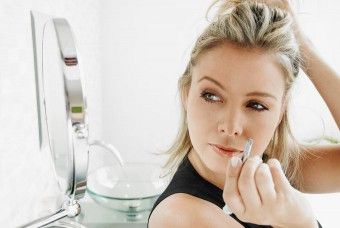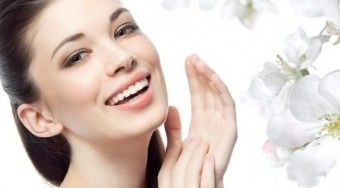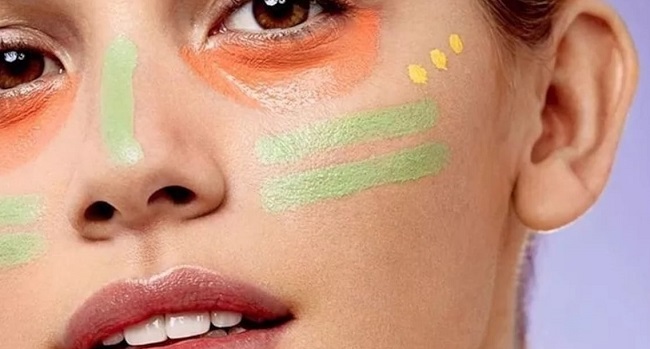Placental cosmetics is a line for the care of mature skin, which is based on the placenta extract. These products are in demand mainly among women aged 35-45 years. Doctors and researchers have come to the conclusion that the numerous growth factors contained in the placental tissue have a beneficial effect on the growth and division of healthy skin cells on all its layers.
That is why placental cosmetics is a revolutionary product of the third generation, and deserves some recognition among professionals – aesthetists and dermatocosmetologists.
Common myths about placental cosmetics

The only snag is how not to miscalculate with the acquisition of a surrogate, gullibly seduced by a beautiful wrapper.
Myth number 1. The main raw materials for the manufacture of cosmetics “extracted” from abortive material.
Reality. This is not true. And the point here is not even the ethical considerations of manufacturers, but the peculiar “greed” of physicians. For the manufacture of products used placenta, which is quite mature and large. And such is available only after birth. The placenta obtained after an abortion, and even an artificial birth, is ten times smaller than the “necessary” one. Therefore, the use of abortive material is about 10 times less beneficial to manufacturers.
Myth number 2. The effect of using the products in this segment helps rejuvenate the skin to a state that can only be achieved through plastic surgery or specific injections.
Reality. This statement is relatively false. Indeed, such products contain a lot of growth factors. Some are aimed at the growth of blood vessels and capillaries, while others stimulate fibroblasts that produce collagen and elastin proteins..

But its use is best done in courses. For example, the well-known medicine “Solcoseryl” based on plasma of calves is also a kind of placental drug.
It helps to revive damaged body cells and stimulate the growth and division of new particles..
The medicine provides quick healing of deep wounds and small wounds on the skin, restore damaged ligaments, and even renew brain cells. But it is used strictly for its intended purpose and in the presence of specific indications.
Do healthy cells need to be constantly stimulated?
Our body is the subtlest system that reacts sharply to any external stimuli. The more often such stimulations and activation occur, the greater the risk of malignancy (malignant degeneration) of cell structures. Immunity fights against this mechanism to the last, however, if a cell is forcibly “forced” to divide by the constant influence of growth factors on it, the protective functions inevitably fade away.

The standard cream and mask based on the placenta are used in professional cosmetology as a regular intensive care. The home use of such funds should be carried out very carefully and dosed..
Myth number 3. Japanese placental cosmetics developed according to the latest nanotechnology, and it constantly nourishes the skin with nutrients at the cellular level.
Reality. Any statement about the procedures and means where the prefix “nano” appears should a priori become false in your understanding. Loud statements are almost always advertising tricks, otherwise, if they fit in with reality, cosmetics are very expensive. So expensive that it’s easier to have plastic surgery than using such a cream.
In any case, there is no doubt about the effect of the former. As for the substances contained in this cosmetics – nucleic acids and polysaccharides – their molecules are very large to penetrate the epithelium. In addition, the meaning of their influence is surface moisture, but not nutrition. By the way, the molecules that bind the liquid can give the opposite effect. What is hydration based on??

But if a person is in an environment with sharply reduced atmospheric humidity (for example, in a room with intensive heating in winter), cells, “moisturizers”, on the contrary, will take away the remaining fluid from the skin.
So the moisturizers used in certain conditions can also dry out the cover.
Myth number 4. The human placenta is many times more effective than the animal.
Reality. By the content of biologically active substances, both variants of the raw materials are identical. Therefore, by and large, there are no differences from which placenta this or that remedy is made.
Myth number 5. Placental cosmetics – the youngest trend.
Reality. In fact, such products began to be used back in 1940. At the same time, the beneficial effect of the placental extract on the skin condition was noted. The cover really became more elastic, fresh and “young”. But the joy of the discovery did not last long: scientists soon discovered that steroid hormones contained in raw materials could adversely affect the cellular structures of the skin. And the hormonal imbalance in them – has become the lesser of evils in the list of probable “side effects”. Having discovered such dangerous realities, scientists began to eliminate hormonal substances from cosmetic products..

In this advertising trick, we are talking about the very old, untreated from hormones placental cosmetics, which does not even have distant parallels with modern production.
The new-fashioned “boom” in demand for placental cosmetics is, apparently, greatly exaggerated. Beauticians use it only for medical and rehabilitation purposes, after aggressive procedures. Dermatologists unanimously say “no” to the growth factor, substantiating this with the really existing risks of developing oncology.
Be vigilant, and carefully study everything that you intend to buy and use. “Tasty” advertising does not give you any guarantees of protection against unforeseen problems.










